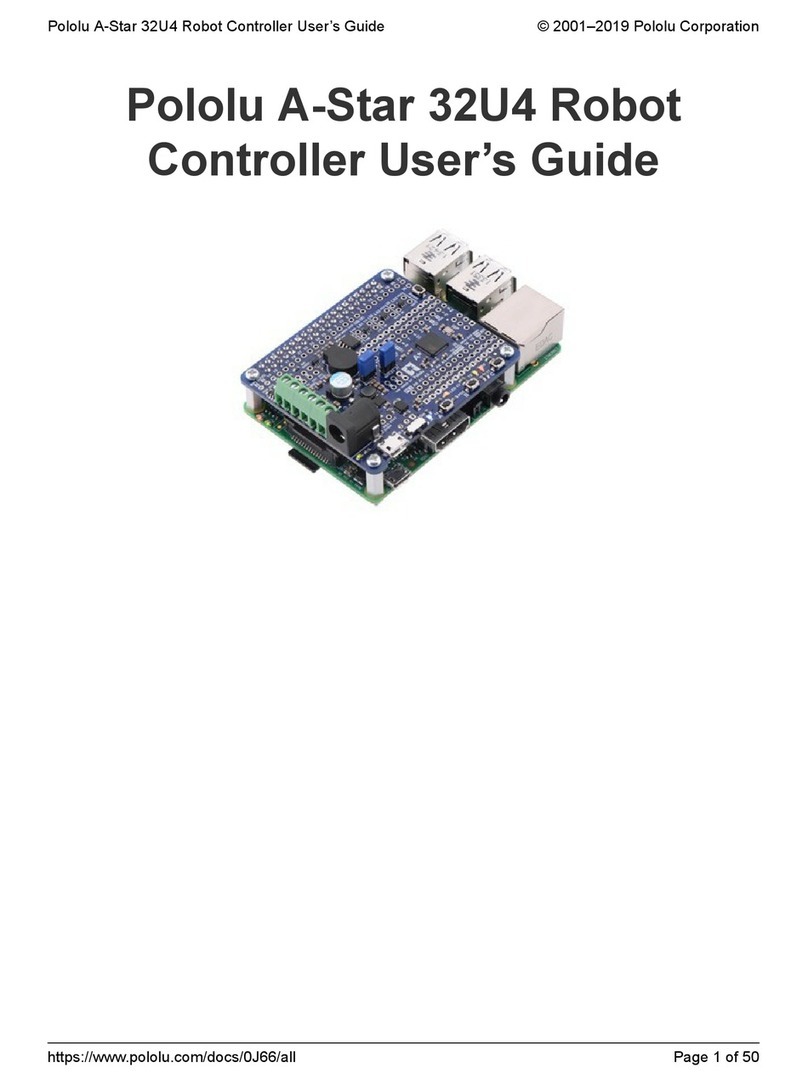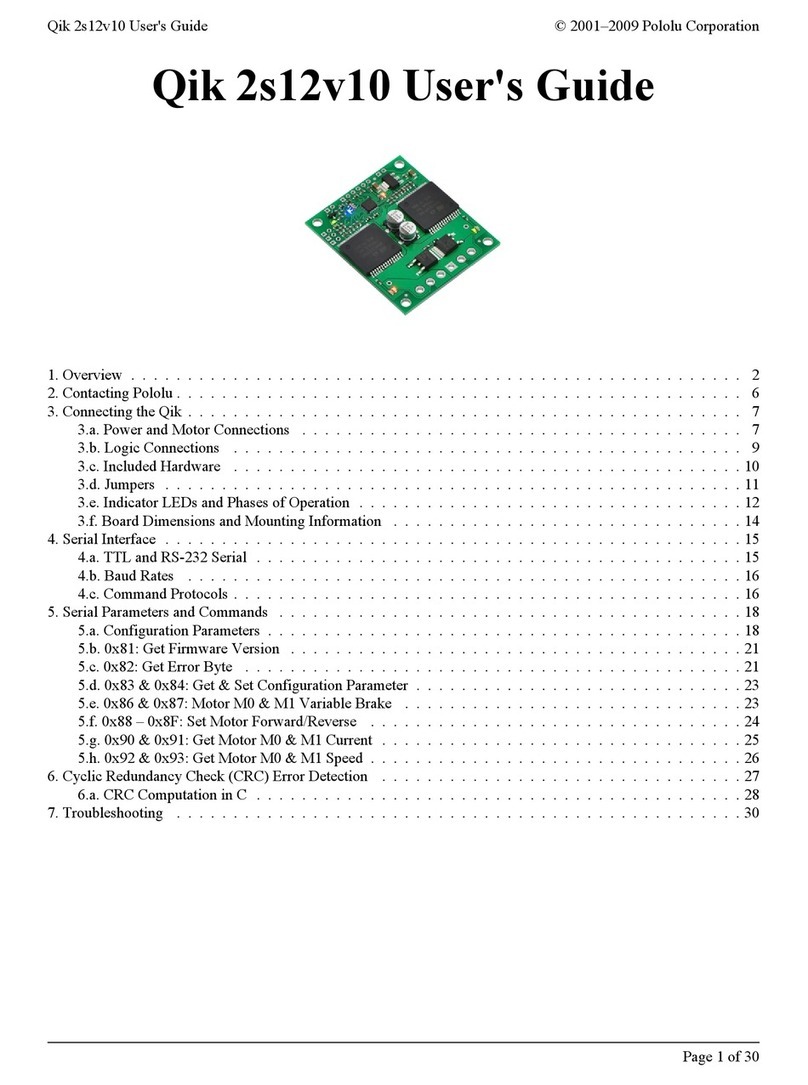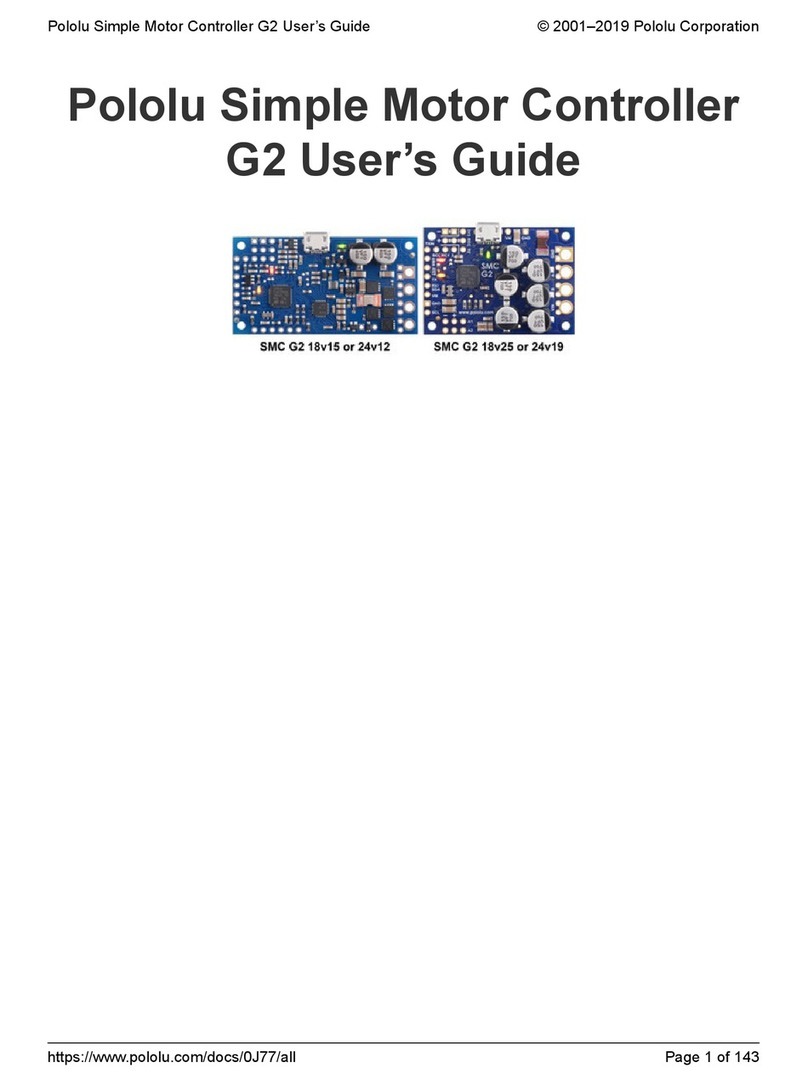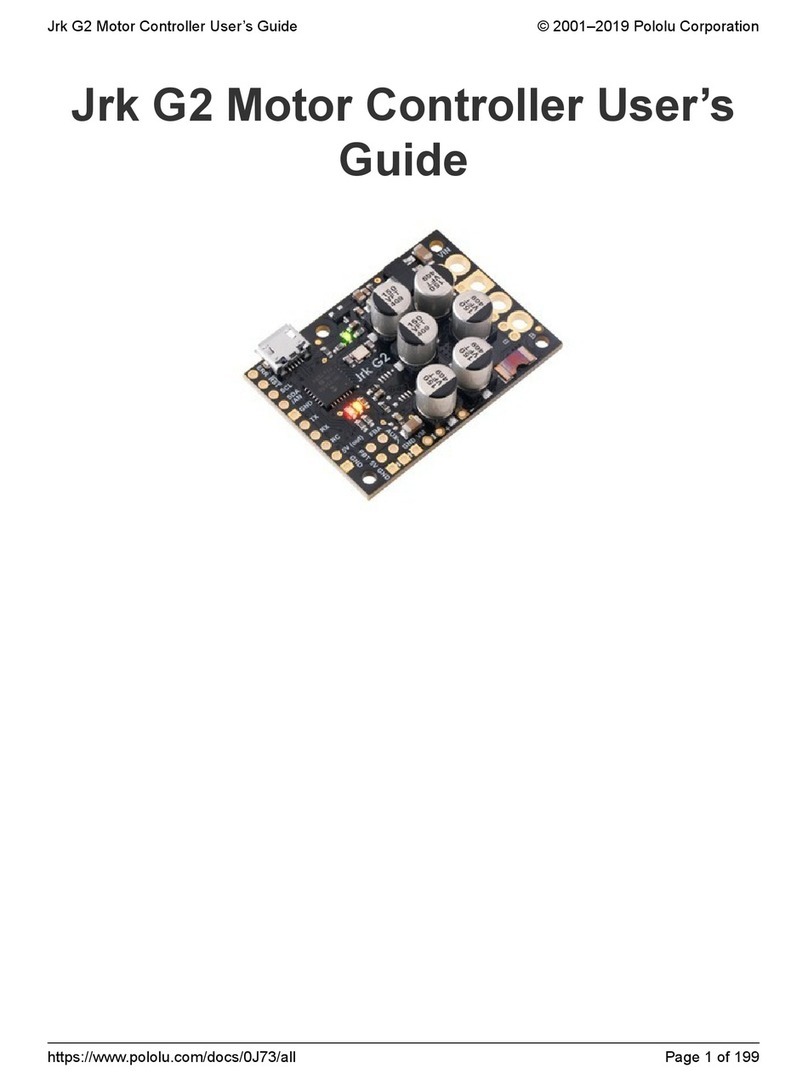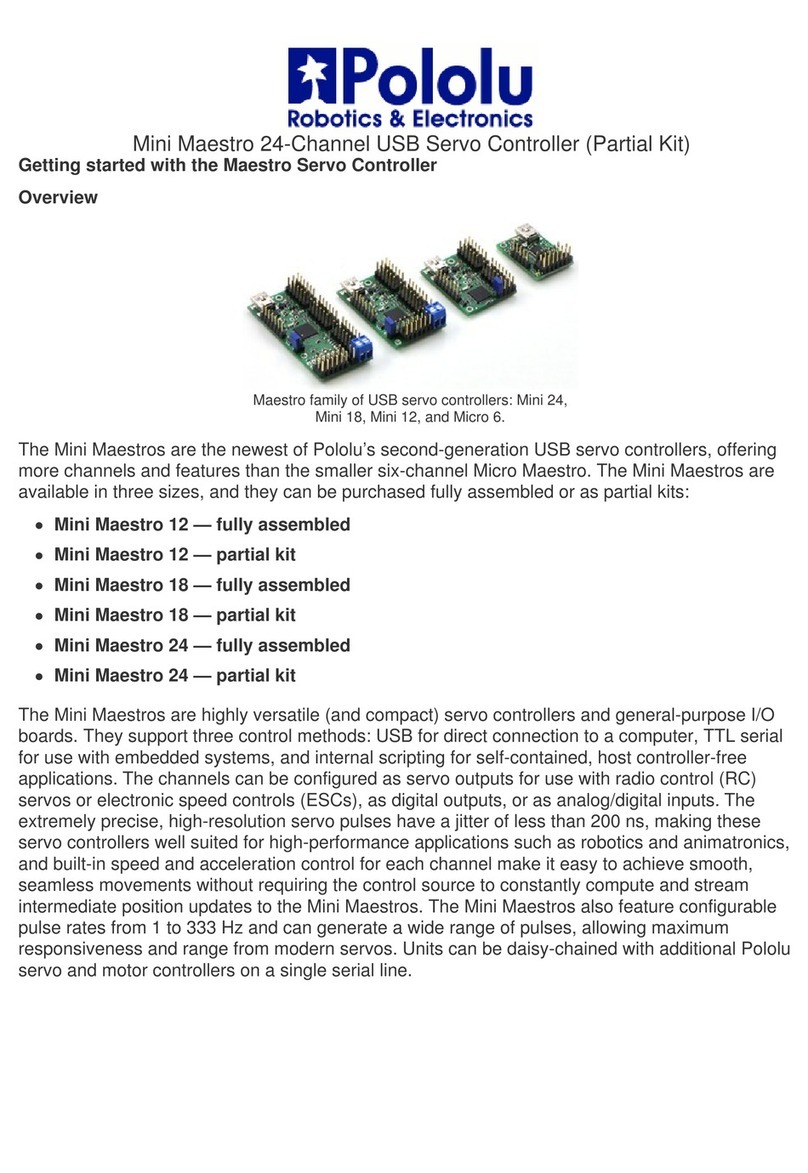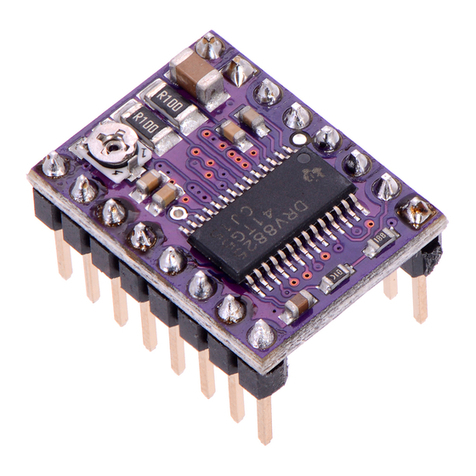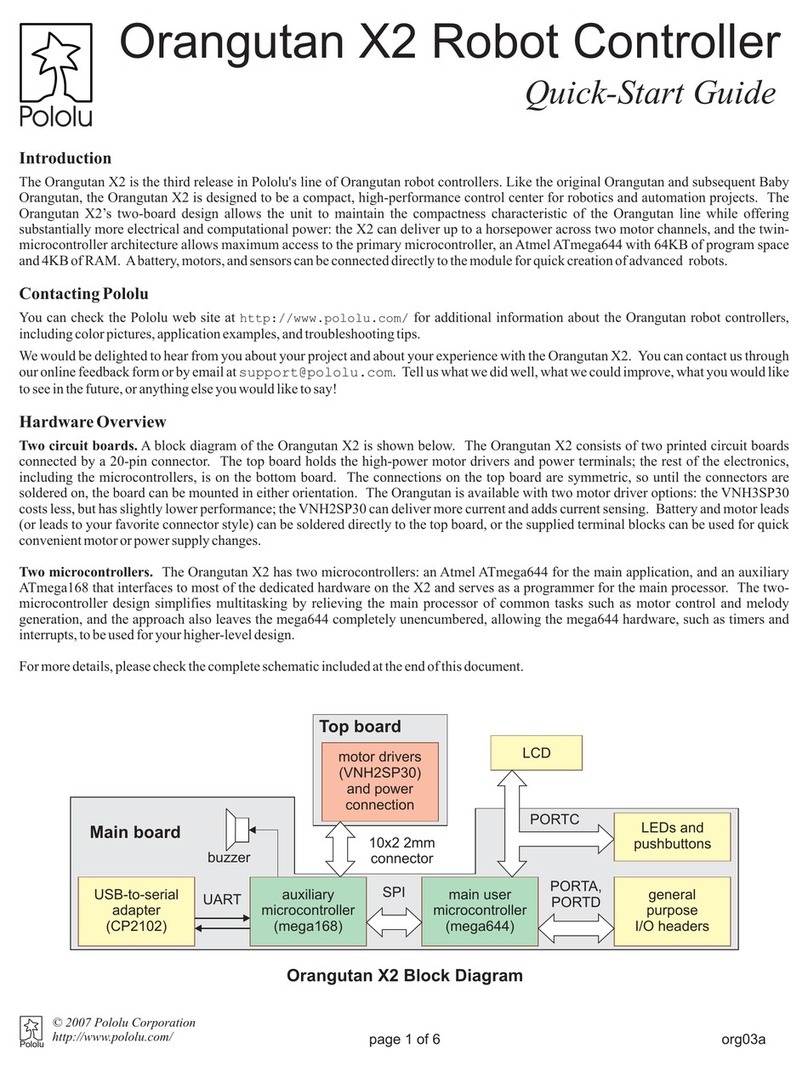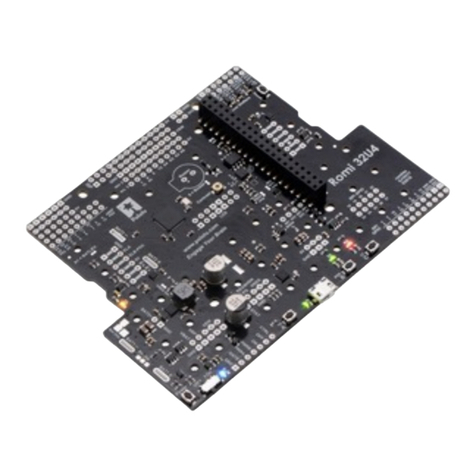
channel has been learned; a red flash indicates the corresponding channel has not been
learned. For example, a flash sequence of “red, red, green, red, green” means only channels 3
and 5 have been learned. If the TReX is in analog mode, it signals which analog channels
have been learned; if it is in RC mode, it signals which RC channels have been learned; if it is
in serial mode, the learned-channel signals are for the mode selected by the “channel input
source” parameter (this parameter’s default value is RC mode).
▪Red and green LEDs blink in unison around once per second: The TReX is waiting to see if it
should enter learning mode. This happens when the TReX is in RC or analog mode, the mix
jumper is in place, and the serial out (SO) pin is grounded. This last condition can arise if the
TReX is connected serially to an unpowered microcontroller. Ungrounding the SO pin will
cause the TReX to startup as normal; removing the mix jumper will put the TReX into
learning-mode, at which point it will either start trying to learn the channels or will wait for a
valid signal on the input lines. If it waits, it will flash the red and green LEDs in unison four
times faster while waiting.
▪Red and green LEDs alternate around once per second: The TReX is waiting to see if it
should enter firmware-upgrade mode. This happens when the TReX is in serial mode (i.e.
there is no mode jumper in place), the mix jumper is in place, and the serial out (SO) pin is
grounded. This last condition can arise if the TReX is connected serially to an unpowered
microcontroller. Ungrounding the SO pin will cause the TReX to startup as normal; removing
the mix jumper will put the TReX into firmware-upgrade mode, which will cause the red and
green LEDs to start alternating four times faster.
◦ While Running Normally:
▪Red LED on solid, green LED might flicker: The red LED solidly on indicates that serial is in
control of the motors (i.e. serial override is active or the TReX is in serial mode). While serial
is in control of the motors, the green LED acts as a serial-packet-received indicator. It lights
when a command byte is received and stays lit until the last byte of the command packet is
received. The flicker rate of the green LED will depend on the baud rate you’re using and the
rate at which you’re sending serial commands to the TReX.
▪Green LED on solid, red LED might flicker: The green LED solidly on indicates that the
channel inputs are in control of the motors (i.e. the TReX is in RC or analog mode and serial
override is not active). While the channel inputs are in control of the motors, the red LED acts
as a serial-packet-received indicator. It lights when a command byte is received and stays lit
until the last byte of the command packet is received. The flicker rate of the red LED will
depend on the baud rate you’re using and the rate at which you’re sending serial commands to
the TReX.
▪Green LED is rapidly flashing, red LED might flicker: The TReX will not let the channel
inputs start controlling the motors until safe-start conditions are first met (see Section 4.e).
Specifically, it is waiting for a valid signal on all required channels, for the motor signals to
request no motor movement, and for the serial override signal to not be requesting serial
override mode. This state occurs when the TReX first starts running in RC or analog mode,
and can be retriggered if an RC signal is ever lost on a required channel. This state will never
occur if the TReX is in serial mode. While in this state, the red LED acts as a serial-packet-
received indicator as described in the bullet point above.
◦ While in Learning Mode (see Section 3.e):
▪Red and green LEDs blinking rapidly in unison: The TReX is in RC mode and it is waiting
for a valid RC signal on at least one channel before it begins learning the channel calibration
values.
Pololu TReX User's Guide © 2001–2009 Pololu Corporation
3. Getting Started Page 9 of 22
